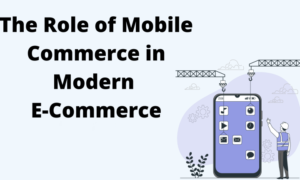An online presence for FinTech leadership brands is a prerequisite in today’s global financial marketplace, but the “white shoe” era of genteel–and slow–financial services engagement is long gone in the digital world.
How can FinServ and FinTech global brands engage with, and grow, key customer relationships in the highly competitive digital world?
The Customer is the Key
According to the 2021 Mobile App Engagement Benchmark Report, finance apps have one of the highest retention rates of any category, with a 90-day average of 58 percent (versus 48 percent for other types of apps).
The reason for fintech apps’ higher retention rates is that, by their very nature, fintech apps are highly personalized, very secure, and generally designed to be among the most user-friendly in the market.
Best practices for native app and other technology strategies to create loyal users in fintech, therefore, can be narrowly focused through the lens of the user experience.
User-First, Always
For retailers, the goal in mobile app engagement is to keep consumers engaged as long as possible. For many fintech apps, the opposite is often true: the longer a user is on the app, the more likely that they’re encountering problems. Because the most important feature of such apps is that the user can quickly and easily complete whatever action prompted them to open the app.
What this means for fintech mobile app design is eliminating anything that’s not absolutely necessary so that users can complete actions in as few steps as possible.
For fintech apps that have forms, make them as frictionless as possible—short, broken into different pages if they’re on the longer side, clearly labeled with field explanations available, and with real-time error flags so users can quickly address them and don’t encounter the frustration of hitting “submit” only to be given a vague error message. If possible, eliminate the need for manual data entry by the user with keyboard alternatives like scanning in documents.
Personalization is Critical
McKinsey calls personalization a “force multiplier,” noting that consumers expect it and retailers that deliver a personalized app can see a 10 to 25 percent lift in revenue. By securely storing personal information and preferences; integrating secure payments, cameras, and other features like face or other biometric ID; and using user data analytics to direct relevant content and offers, you can offer the ultimate in convenience and customization.
“The more skillful a company becomes in applying data to grow customer knowledge and intimacy, the greater the returns. For digitally native companies that forge a data-backed, direct-to-consumer model, personalization isn’t just how they market, it’s how they operate,” says McKinsey.
Go Native
Because native apps load faster, allow for content customization, don’t require repeated customer log-ins, and are more secure. According to ThinkWithGoogle, a whopping 75 percent of people who visit a brand website on a mobile device will leave if the site isn’t mobile-friendly, and 50 percent will use that business less, even if they like the business.
Ryan Terry, CRO at BILDIT confirmed the above by stating “while at Amazon, our team recognized across digital shopping platforms that for every 100 milliseconds of added page load, it cost the company 1 percent in revenue. Some estimate it may actually cost as much as 7 percent in conversions.” If you are a medium to large scale enterprise, this is an unacceptable KPI.
Use Your Data
A native app can allow you to make real use of user data by connecting to back-end systems and content to deliver a real-time and seamless digital journey across all devices. Use advanced analytics to gather insights from that data to help customize content, offers, and follow-up notifications. Keep tabs on all interactions across mobile apps, websites, and even in-store so that you can deliver the right content and trigger the right actions at the right time.
Strategize APIs
APIs can be very useful in improving user experience and retention, and most fintech mobile apps will need some API integration—with the user’s bank accounts, etc. But, be very selective and strategic in the use of APIs. Ask: Does the API deliver advanced features that support your mobile app’s function? Is the API critical for providing app features you need but would be difficult, time-consuming, or impossible to pull off?
Can You Afford It?
The simple answer is: you can’t afford not to make your mobile fintech app personal, streamlined, and user friendly.
Traditionally, fintech mobile app development can take nearly a year and $500,000. But, as anyone in fintech knows, nothing stays the same. There’s now new and better tech that requires less time and money, and development partners that specialize in providing native apps that drive user loyalty and engagement.
About the Author
Ryan Terry is President of BildIt, the leading mobile app development platform specially designed for retail and brand ecommerce. Ryan has over 15 years of experience in digital retail including leading advertising growth, brand development, and mobile app creation for retailers and suppliers in the US, China, and Japan markets. Under his leadership, he has driven over $100 million in net new revenue to date for his clients and retailers while creating strategic partnerships across hundreds of vendors in the process. In addition to his professional career, he is also an avid philanthropist with long term goals set on global youth outreach via athletic leadership curriculum.
































